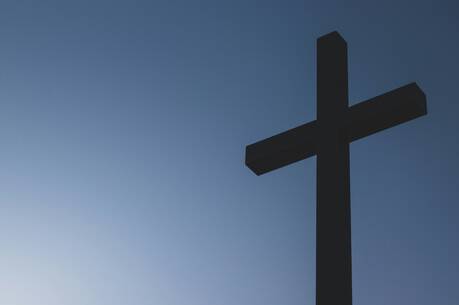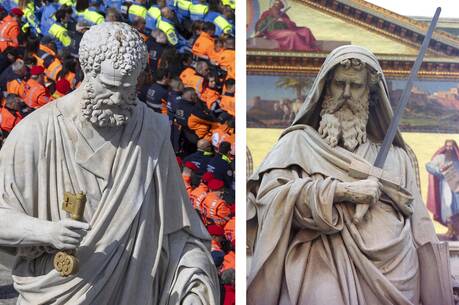Do you treat your neighbors and community as family? The Gospel says you should.
Today is the feast of the Holy Family of Jesus, Mary and Joseph. The themes of family and community are prominent in the multiple reading options offered in the Lectionary.
She gave thanks and spoke about the child to all awaiting the redemption of Jerusalem. (Lk 2:38)
How can you strengthen your relationship with your family?
Do you treat your neighbors and community as family?
What can you do to support families?
The first reading can be taken from either Sirach or Genesis. The reading from Sirach provides wisdom on how parents and children should interact with one another. Parents are given guidance and authority over child-rearing, and children are instructed to honor and care for their parents, especially as they age. The reading from Genesis is a combination of Chapters 15 and 21, in which God promises Abraham descendants that will be innumerable. The second part of the reading is the fulfillment that comes through Sarah with the birth of Isaac. The omitted parts include Abraham and Hagar’s relationship, which produces their son Ishmael. The first readings note the importance of parent-child dynamics and affirm children as blessings from God, even at times defying biological constraints, as in the case of Abraham and Sarah.
The second reading comes from either Colossians or Hebrews. If Colossians is selected, the shorter option should be preferred to eliminate the harmful language of women’s subordination, as was discussed in last year’s column for this feast (12/28/19). The shorter reading emphasizes ways in which a community should emulate God and treat one another as family, offering love, compassion, patience and forgiveness. The reading from Hebrews will likely be proclaimed if Genesis is selected as the first reading. Hebrews reflects on Abraham’s willingness to sacrifice Isaac, interpreting Genesis 22 as a sign of Abraham’s faith in God’s power and promise.
The Gospel will come from Luke, and the Lectionary offers a long and a short option. The short option misses most of the narrative, so the long option should be preferred. In it, Mary and Joseph take the newborn Jesus to be presented in the Temple. They offer a sacrifice and receive prophetic words from two members of the community, Simeon and Anna. This presentation is the first public action undertaken by the Holy Family in Luke’s Gospel. The act unites the family as they fulfill religious duties prescribed in the Torah. Moreover, the community, represented by the prophets Simeon and Anna, accepts and recognizes the family and Jesus’ significance as the Messiah. The public affirmation and witness make this text apropos on the feast of the Holy Family, as the community-family supports the Holy Family. The Gospel calls to mind the African proverb “It takes a village to raise a child,” which highlights the role of the community in providing love and guidance for children to survive and thrive.
Today’s readings are reminders that the family is a foundational relationship that must be nurtured, and the community is an extension of the family. The readings should inspire us to strengthen connections with our own families and communities.
This article also appeared in print, under the headline “Family and Community,” in the December 2020, issue.









